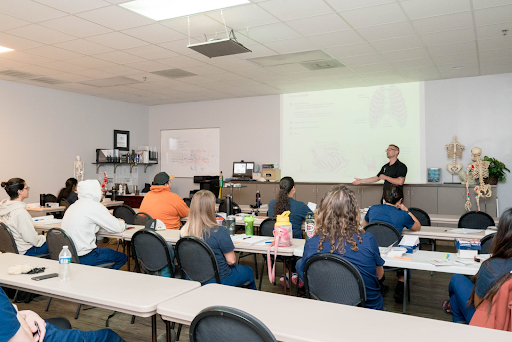Pursuing a career as a massage therapist is both rewarding and transformative. Students entering a massage therapist school quickly discover that massage therapy is much more than just relaxation—it’s a science and an art. Every reputable massage school, including leading institutions like those in massage school San Antonio, ensures students gain hands-on training in a variety of massage modalities. Each technique serves a specific purpose, targeting different aspects of health, anatomy, and client needs. Below are the top five massage modalities most commonly taught in massage therapy schools, along with an explanation of why each is essential for a successful career.
1. Swedish Massage
Swedish massage is the foundation of most massage therapy programs and the first modality students master in massage therapist school. This technique uses a combination of long, gliding strokes (effleurage), kneading (petrissage), friction, tapping (tapotement), and gentle joint movements. It improves circulation, promotes relaxation, and helps relieve muscle tension.
In a professional setting, Swedish massage serves as a gateway to understanding anatomy, muscle groups, and client assessment. Students at a massage therapy school learn how to adjust pressure, use proper body mechanics, and customize techniques to meet individual client needs. Because Swedish massage is often the most requested service in spas and wellness centers, proficiency in this modality is vital for future employment.
2. Deep Tissue Massage
Deep tissue massage is an advanced technique that focuses on the deeper layers of muscles and connective tissues. Unlike Swedish massage, deep tissue work requires more pressure and slower strokes to release chronic muscle tension and knots. Students in massage school in San Antonio and other programs learn how to locate trigger points and use tools such as forearms and elbows to apply sustained pressure safely.
This modality is particularly effective for clients with chronic pain, sports injuries, or postural issues. It teaches future therapists the importance of communication with clients about pain thresholds and comfort levels. By mastering deep tissue massage, students enhance their ability to work in clinical, rehabilitative, and sports environments where targeted muscle therapy is essential.
3. Sports Massage
Sports massage is designed to assist athletes and active individuals in enhancing performance, preventing injury, and accelerating recovery. During massage therapy school, students learn how to apply sports massage techniques before and after physical activity. Pre-event sessions may focus on warming up muscles and increasing flexibility, while post-event sessions aid in reducing soreness and promoting muscle recovery.
In massage school, San Antonio, and other institutions, sports massage training often includes understanding biomechanics, movement patterns, and the physical demands of various sports. Graduates who excel in this modality can work with athletic teams, fitness centers, or even as independent practitioners supporting professional athletes. This specialization not only broadens career opportunities but also allows therapists to work in dynamic and fast-paced environments.
4. Shiatsu and Eastern Modalities
Shiatsu, originating from Japan, is based on traditional Chinese medicine principles and involves applying rhythmic pressure using fingers, palms, and thumbs along the body’s meridians. This technique promotes the flow of energy, or “Qi,” and restores balance within the body.
In massage therapist school, students learn about energy pathways, acupressure points, and the connection between body and mind. Incorporating Shiatsu or other Eastern techniques, such as Thai massage, adds diversity to a therapist’s skillset and helps attract clients interested in holistic and alternative healing. These modalities are particularly valuable in wellness centers and spas that emphasize integrative approaches to health.
5. Myofascial Release
Myofascial release focuses on the fascia—the connective tissue that surrounds muscles and organs. Over time, fascia can become restricted due to injury, inflammation, or stress, leading to pain and limited movement. In massage therapy school, students learn how to apply gentle, sustained pressure to stretch and loosen these fascial restrictions.
This modality requires patience, precision, and a deep understanding of anatomy. It is widely used in clinical and rehabilitative settings, often alongside physical therapy or chiropractic care. Learning myofascial release helps massage therapists develop a keen sense of touch and sensitivity to subtle changes in tissue texture and movement, enhancing their overall therapeutic effectiveness.
Why These Modalities Matter
Each of these modalities plays a crucial role in shaping a well-rounded massage therapist. Massage therapist schools integrate them into their curriculum to ensure students can meet a diverse range of client needs—from relaxation and stress relief to injury rehabilitation and chronic pain management. By mastering both Western and Eastern techniques, graduates can offer a comprehensive approach to wellness that appeals to clients in various professional settings, including spas, medical clinics, and sports facilities.
Moreover, understanding multiple modalities equips therapists with the flexibility to design customized sessions. For instance, combining Swedish and deep tissue techniques can address both relaxation and muscle recovery, while adding myofascial release or Shiatsu can enhance overall results.
Conclusion
Enrolling in a massage therapy school is the first step toward building a meaningful and impactful career in health and wellness. Students not only learn essential technical skills but also develop empathy, communication, and professional ethics. Whether studying at a massage school San Antonio or another institution, gaining expertise in these five massage modalities provides a strong foundation for long-term success. By mastering these core techniques, graduates of any reputable massage school are well-prepared to improve the lives of others through the power of touch and therapeutic care.
